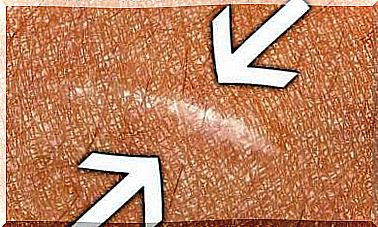Onychomycosis: When Fungal Infections Affect The Nails
Apple cider vinegar has antifungal properties, which is why it helps us eliminate fungus. To prevent their occurrence, try to keep your feet dry. You can also sprinkle talcum powder on them.
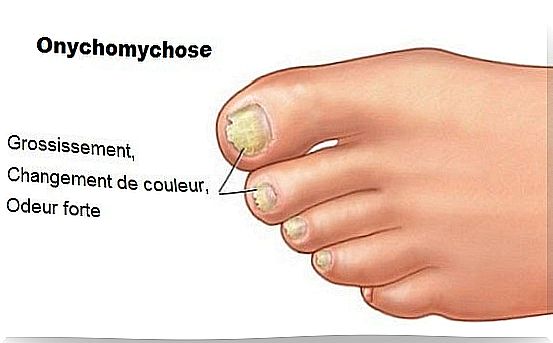
If we know this pathology as nail fungus, its scientific and medical name is onychomycosis. This condition changes the appearance of the nail, whether it is its color or size. Find out more about this issue in this article.
Causes and symptoms of onychomycosis
It is a very common condition in people all over the world, which begins on one finger (of the feet or hands) and spreads to others, due to the passage of time and the lack of treatment. Athletes’ foot can also appear on some people, due to the same fungal infections that affect the skin.
Onychomycosis can only be seen through changes in the nails, be it color, shape or size. She has no symptoms like pain or discomfort.
Many people take a long time to treat yeast infection and that is why it can take several months or even years to completely cure them.
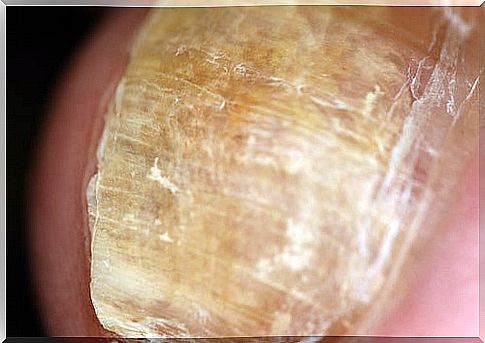
While onychomycosis is often treated for aesthetic reasons, in some advanced cases it can cause chronic pain that is difficult to treat. Early diagnosis is ideal for eradicating the yeast infection permanently.
Among the causes of onychomycosis, there are three different types of yeast infection. The best known of these is Candida albicans .
They are transmitted by direct contact and can live with people without producing infection. However, when certain conditions or factors weaken our immune system, the risk of developing this pathology is higher.
Aging is one of these reasons, for example, because with age, fungal infections accumulate and colonize the foot. The body’s defenses are also weaker.
Other possible causes
When the foot is always wet, as is the case with swimmers or people who use inappropriate shoes (rubber, with nylon socks etc.), the terrain is also more favorable.
Suffering from foot diseases like psoriasis, athlete’s foot etc. is also a risk factor. Diabetes is linked to onychomycosis because it affects the body’s defenses.
If you have relatives who suffer from onychomycosis, you are more exposed to this disease either by genetic predisposition or because of the contagion of yeast infection through towels, bathtubs, shoes, etc.
Finally, immunosuppression or the use of biological drugs can also be the cause of fungus on the nails.
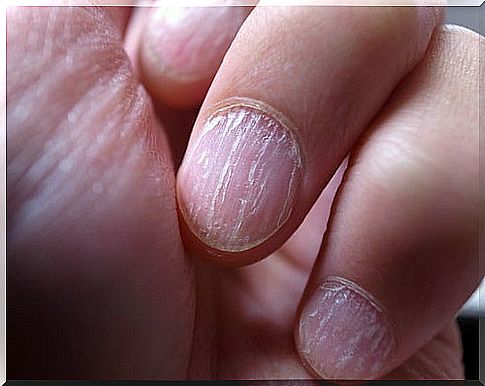
Effects on nails
The main problem is an aesthetic problem, because of the alterations in the appearance of the nail. We can distinguish 5 types of modifications:
- The edge of the nail turns yellow and enlarges, the surface is rough and fragmented.
- The root of the nail is damaged, with white and yellow areas.
- There are dots or white spots on the surface of the nail.
- The nail is brown in color (rare cases of melanonychia).
- The nail is completely deformed, it is curved, grows and hardens. It easily breaks into fragments.
To be able to prevent the onset of onychomycosis, it is important to have good hygiene, to avoid the proliferation of fungi and bacteria.
Hands and feet should be washed and dry well each time. Use adequate cotton socks and shoes that are not too tight so that the feet can breathe and sweat.
You should also avoid showering barefoot in locker rooms or gyms and not sharing your towel with infected people.
When you have onychomycosis, it is necessary to cut your fingernails short so that they do not protrude from the fingers. After cutting them, disinfect them. Do not use false nails or polish.
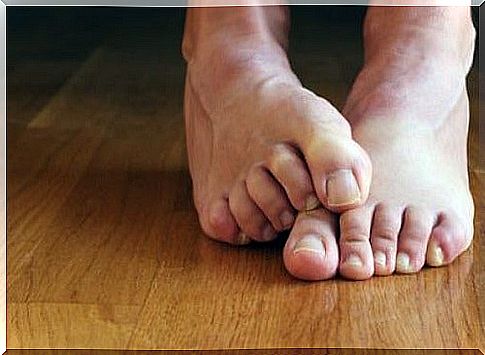
Home remedies for nail fungus
One of the most well-known natural treatments for onychomycosis is tea tree oil. It is used for mild and moderate cases because it is a powerful fungicide.
Mix equal parts tea tree oil with olive oil and thyme oil. Cover the affected nail with the preparation, using a cotton ball or a brush (which you will not use for anything else).
Leave on for 15 minutes and scrub with a toothbrush. When the foot or hand is clean and dry, apply a few drops of tea tree oil to the nail.
The second treatment known for its effectiveness in eliminating nail fungus is apple cider vinegar. To use it, prepare a foot bath with vinegar and lukewarm water in equal doses.
Soak feet or hands (or at least fingernails) in it for 20 minutes. Wipe well with a towel and a hair dryer, paying particular attention to the affected nail but also between the fingers.
Another option against yeast infection
Another vinegar-based option is to prepare a mixture with two tablespoons of vinegar and two tablespoons of ground rice flour. Put it on the nail, leave it on for 15 minutes and rinse (repeat the drying process previously explained).
Mix baking soda in water and form a paste. Put this preparation on a cotton ball and spread all over the nail, trying to get the mixture into the skin under the affected nail. Leave for a few minutes, rinse and dry.
Put two cups of water and three tablespoons of thyme in a saucepan. Boil for 5 minutes. Turn off the heat, cover and let cool. Soak a cotton ball or cotton swab and put it on the nail with onychomycosis.
Boil a liter of water with 10 cinnamon sticks cut out. Lower the heat to minimum and let heat for 5 minutes. Let sit for 45 minutes and when it’s warm, pour into a container where you can soak your nails.
Extract the juice from an onion and wet a cotton ball with it. Rub on the nail that has a yeast infection. You can pass the halved onion directly on the affected part.
Mix a spoonful of lemon juice, 5 drops of hydrogen peroxide and two spoonfuls of aloe vera gel. Put this on the affected nail and let it dry on its own.
Boil 5 cloves of garlic in a cup of water. Pour into a container with water and put your feet in it for 5 minutes. Repeat this daily for a full month.

